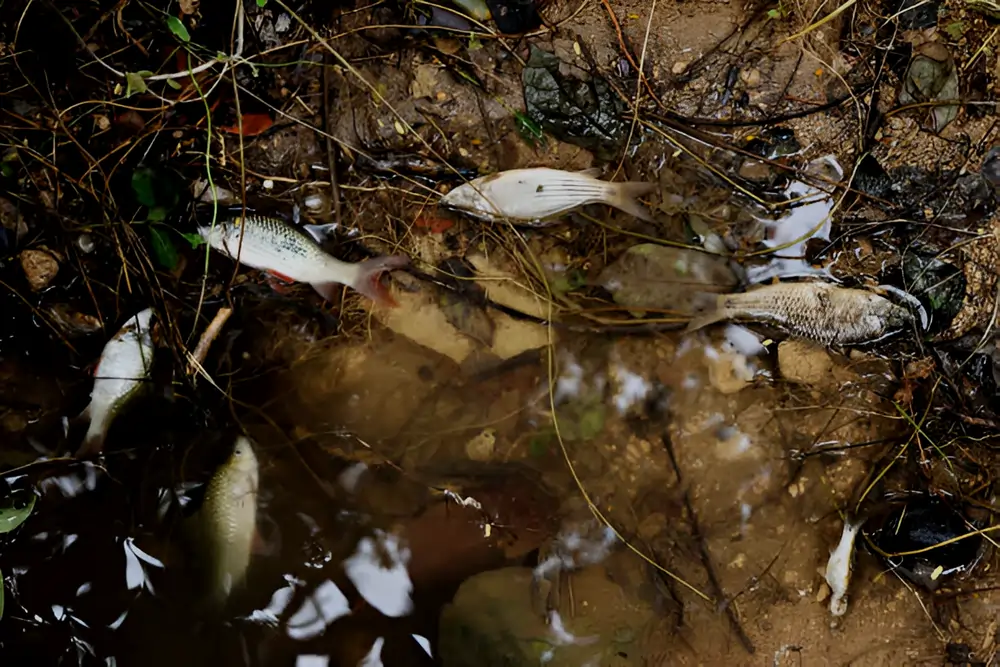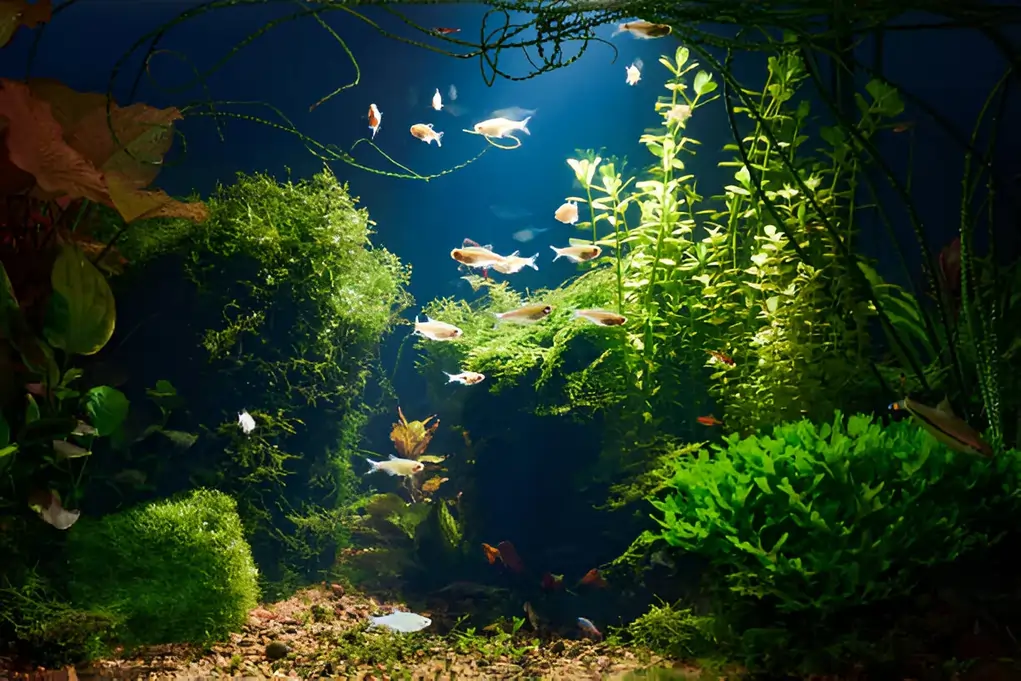New tank syndrome is a serious problem for aquarium individuals, especially new for hobbies. This is a condition that can cause rapid destruction in fish health due to the accumulation of harmful compounds such as ammonia and nitrite in water. If not handled immediately, the results can be dangerous, resulting in a serious illness or death in your aquatic pets. But how quickly the new tank syndrome will kill a fish, and what can you do to avoid the worst?
How Fast Will New Tank Syndrome Kill a Fish?
New tank syndrome can kill a fish in 24 to 48 hours, depending on the intensity of ammonia and nitrite in water. Fish are extremely sensitive to changes in water chemistry, and a collection of dangerous compounds can quickly cause stress, toxicity and even death.
Due to the waste produced by fish, ammonia levels in the new setup tank can increase within a few hours after the introduction.
Without a well -installed colony of favorable bacteria to break these dangerous compounds, the ecology of the tank becomes very fast toxic. Early symptoms of discomfort in fish can occur during hours, including irregular swimming, fatigue and groans on the surface of the water due to a lack of oxygen.
How Fast Will New Tank Syndrome Kill a Fish in Water?
Fish suffering from new tank syndrome can show symptoms of stress within 6 to 12 hours after being in water, and death can occur 24 to 48 hours after ammonia toxicity. When ammonia levels are above 0.25 ppm (per million part), they become dangerous, and the level above 1 ppm is often deadly for most fish.
The speed that the new tank syndrome kills a fish in water depends on many factors, including:
- Fish species: Some species are more sensitive to water chemistry than others. For example, Bettas and Goldfish are known for their flexibility, but they will eventually die in poor water conditions.
- Water temperature: Hot water can increase the harmful effects of ammonia, resulting in rapid fish deaths.
- Stocking levels: Overlay of a new tank can lead to a rapid increase in ammonia levels as more fish waste is produced.
Regular water testing is needed in the early stages of installing a tank to ensure that there is no dangerous amount of ammonia or nitrite. The tool set for any early aquarist should contain sets to measure ammonia, nitrites and nitrates.
How Fast Will New Tank Syndrome Kill a Fish After?
New tank syndrome usually does not cause immediate death. Even after the first signs of the new tank syndrome appear, the damage caused by the additional risk of ammonia and nitrite can kill a fish over days or week’s period. Chronic exposure causes problems like these:
- Gill damage: The fish will struggle to breathe properly after Galafas is disturbed.
- Organ failure: Although the level of ammonia is low, the internal organs, especially the liver and the kidney, can cause permanent damage, which can lead to death.
This delayed response means that although the quality of the water is improved, some fish can still die weeks after problems caused by early toxin exposure.
How to Avoid New Tank Syndrome
Avoiding new tank syndrome is necessary to maintain health and life for the inhabitants of your aquarium. Here is a step -by -step plan to prevent it from happening:
1. Cycle the Tank Before Adding Fish
Nitrogen cycle is a process that installs favorable microorganisms in your tank, converting dangerous ammonia to nitrites and then nitrates. This cycle takes about 4 to 6 weeks. You can speed up the process on a constant basis by manually adding ammonia and monitoring water to the level of ammonia and nitrite reaching 0 ppm.
2. Add Fish Slowly
When you start a fresh tank, add a low number of hardy fish to reduce waste generation. Overload of the tank with a lot of fish at a time can increase ammonia.
3. Use Water Conditioners
Products such as ammonia detectors and water balms neutralize toxic compounds temporarily, allowing you to install nitrogen cycles.
4. Perform Regular Water Changes
The water change of 25-50% per week during the first few months helps dilute toxins and helps keep the environment stable while favorable microorganisms collect thoughts.
5. Monitor Water Parameters
Monitor the levels of ammonia, nitrite and nitrate regularly with a water test set. Maintaining these levels guarantee the safety of your tank residents.
How to Fix New Tank Syndrome
If you find that your tank has a new tank syndrome, you must take immediate steps to prevent the loss of fish. Here are steps to solve the problem:
1. Test the Water
First, use a test kit to detect high levels of ammonia and nitrite in water. Before you start solving the problem, you must first decide what is the reason for this.
2. Perform Immediate Water Changes
To dilute poison in water, 25-50% make water changes. This will help reduce the levels of ammonia and nitrite, and give the fish temporary comfort.
3. Add Beneficial Bacteria Supplements
Many aquarium businesses sell bacterial chemicals designed to start the nitrogen cycle. These products introduce bacteria that convert toxic ammonia into nitrites and nitrates.
4. Stop Overfeeding
Overfeeding produces extra waste, which contributes to ammonia accumulation. Food the fish lightly and make sure that uncontrolled food is removed after feeding.
5. Add Live Plants
Live plants absorb natural ammonia and nitrates, which add the nitrogen cycle to good and improve water quality. They also reduce the number of water changes when the tank is made.
Can Fish Survive New Tank Syndrome?
Yes, the fish can avoid new tank syndrome, but only when it is quickly detected and treated properly. The longer fish are made aware of toxic chemicals such as ammonia and nitrite, the less they will probably recover. Hardy fish, such as goldfish and bettas, are more likely to avoid a minor duration of new tank disease.
However, the key to survival is how soon you can solve the problem:
- Rapid water changes and the introduction of favorable microbes are necessary to reduce the level of ammonia.
- If the fish shows symptoms of crisis, such as gasping or swimming game on the surface, immediate action can save them.
New Tank Syndrome Cloudy Water: What It Means
One of the tell-tale signals of the new tank syndrome is the cloudy water. This is usually caused by a bacterial flower due to sudden accumulation of waste in water. When the fish is introduced in a new tank and increases the levels of ammonia, bacteria multiply quickly to digest the waste, resulting in cloudy water.
Here’s what you should do if you see cloudy water:
- Do not overreact: : Cloud water in new tanks usually timber when the nitrogen cycle starts. However, continue to check the water to ensure that ammonia and nitrite levels are low.
- Avoid over-cleaning: Let the auxiliary bacteria grow naturally. Excessive cleaning or changing water can often interfere with bacterial colonies and expand the position of the new tank.
- Use water clarifiers: Although it is not a long -term solution, water offices can help increase vision when your tank is organized.
Conclusion
The new tank syndrome is a common but stopped problem with the new aquarium. Understanding how quickly the new tank disease kills fish and the causes involved will help you take immediate measures and avoid unnecessary fish deaths. You can avoid the problems of new tank syndrome by cycling your tank properly, changing water regularly and monitoring the water quality. Although your tank develops disease, rapid means in addition to water changes and support microorganisms can help your fish and can help restore the aquarium balance.
FAQs
Can new tank syndrome kill fish?
Yes, new tank syndrome can kill fish. It occurs due to a buildup of toxic ammonia and nitrites in an uncycled tank, which can be fatal if water parameters are not properly managed.
How long does it take for shock to kill a fish?
Fish can die from shock within minutes to a few hours, depending on the severity of the shock and the fish’s sensitivity to sudden changes in temperature, pH, or water quality.
What happens if you introduce fish into a new tank too soon?
If fish are added to a new tank too soon, the lack of beneficial bacteria can lead to toxic ammonia and nitrite levels, stressing the fish and potentially causing illness or death.
Why are the fish in my new aquarium dying?
Fish in a new aquarium often die due to poor water quality caused by new tank syndrome, overfeeding, improper acclimation, or an uncycled tank lacking sufficient beneficial bacteria.


